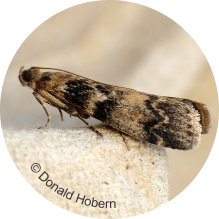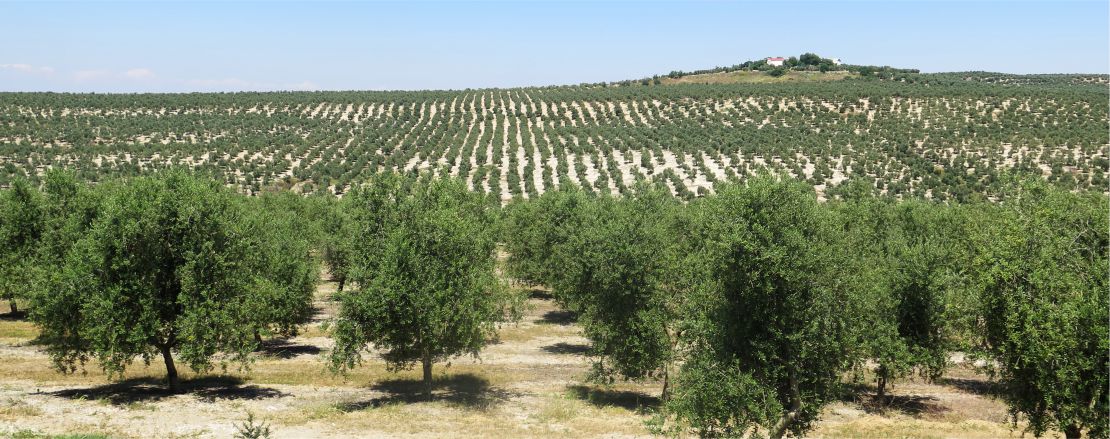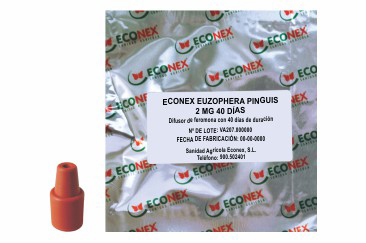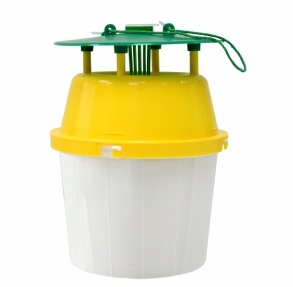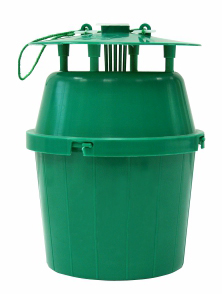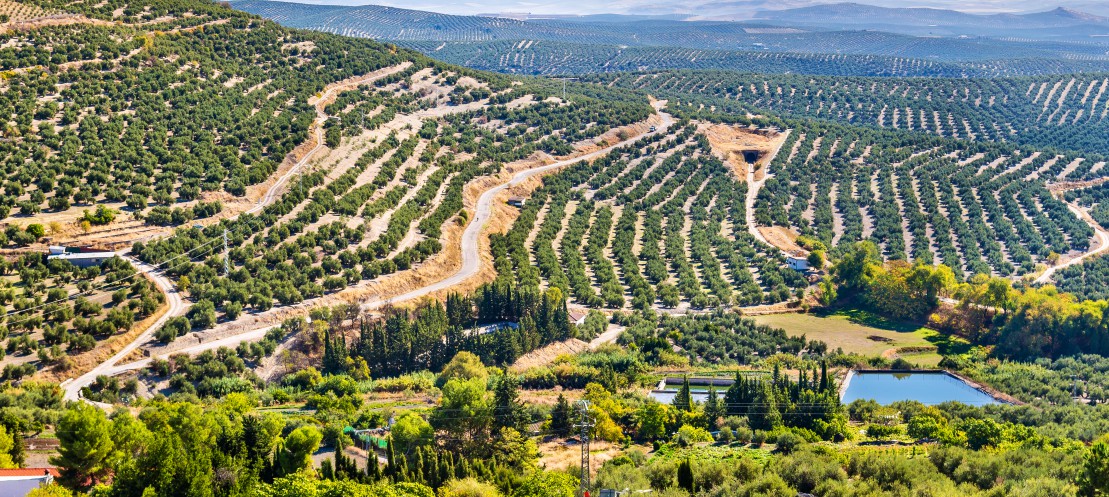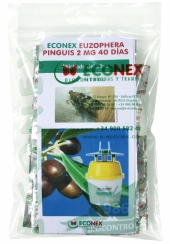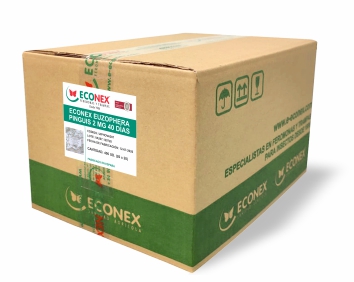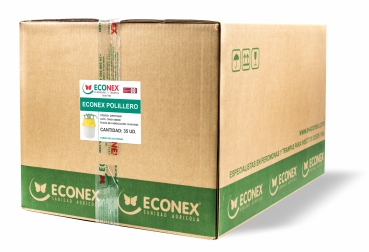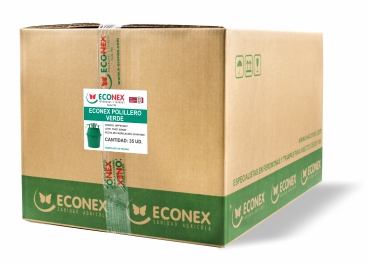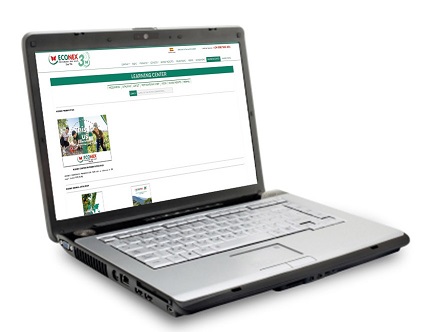Morphology biology
In its larval stage, the insect is found inside the trunk of the olive tree at a depth of 4 to 5 mm, making it almost impossible to reach with chemical treatments. It is only vulnerable when its biological cycle is known and
the moment of egg laying, which takes place outside the gallery, are determined.

Seasonal cycle of Euzophera pinguis in the province of Jaen
The eggs are oval, flat and have a finely reticulated structure. They are pinkish-white, turning a darker colour as the incubation process advances. The female lays the eggs individually or in small groups of 4 to 5 eggs in
the cracks and fissures of the branches.
The larva reaches 25 mm in length and is a light green colour. Its head and thorax are black. The pupa, which is a brown colour, grows inside a fairly dense silk structure of about 10 to 15 mm long.
The adult is a cream-coloured moth with a wingspan of 20 to 25 mm. The forewings have two pale stripes in a zig-zag pattern. The hindwings are primarily white with a thin brown border.
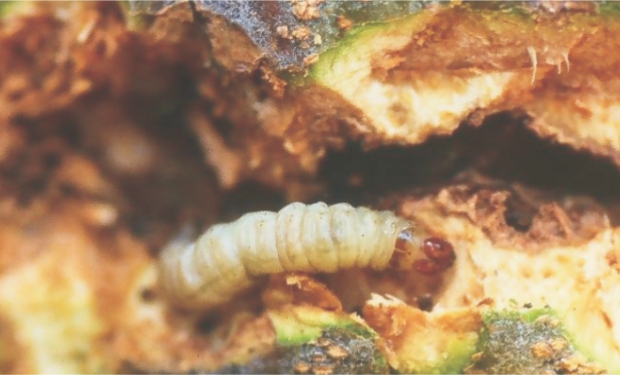
Euzophera pinguis larva
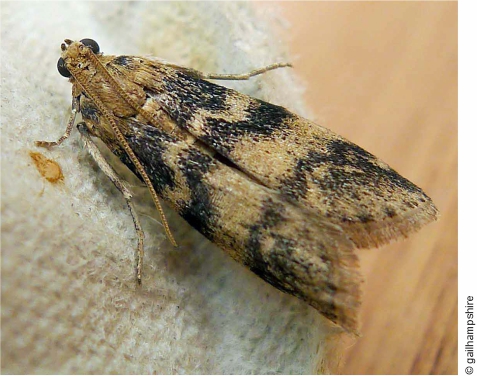
Euzophera pinguis Adult
Symptoms and damages
The presence of fissures and bulges on the bark are the result of galleries that have been perforated by the larva, which prevent the flow of sap.
The existence of exterior accumulations of brown excrement joined by silk threads, are due to the build-up of faecal matter and sawdust removed by the larva and accumulated at the entrance of the gallery. These
prevent both the sunlight and natural enemies of Euzophera pinguis larvae from entering. To recognise them, just raise the areas of bark with presence of excrements and sawdust. Continue excavating along the gallery until
the larva or pupa is found.
Discolouration of the leaves in branches attacked by the insect. This symptom is especially severe at the tips of the highest branches. However, as the attack develops, this discolouration can be seen on the
rest of the tree.
Strong defoliation of the branches that are already infested, which usually means that they have dried up. In the case of young olive trees, this can be mortal. The mortality rate is very high in young olive
trees between 4 and 10 years old.
Euzophera pinguis mainly attacks mainly healthy trees. The first visible signs of a tree that has been attacked are not very obvious therefore, it is not noticeable at first.
In general, the only sign that the farmer notices before the first dry branches appear, is the larvae that are in the cuts of the branches, which are exposed after pruning or in the fissures caused by removing the suckers.
With the exception of the winter months, this pest can be found at any time throughout the year, in all and every one of its developmental stages: larva, butterfly, eggs and adults. This makes it very difficult to establish
a plan of action against this moth. Furthermore, it grows according to the temperature. That is why the olive areas of Cordoba and Malaga are infested with these Lepidoptera all year round. This is due to the extinction
of its natural enemies by uncontrolled and mass use of pesticides.
